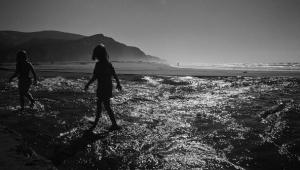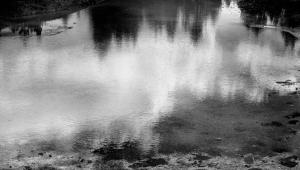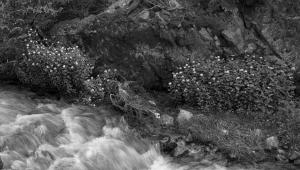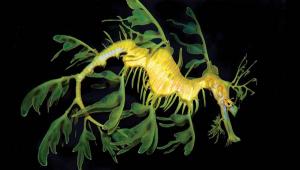Oil And Water: Who Says They Don’t Mix?
This is the basis for a wonderful photography project you can do in your kitchen. All you need to produce photos like you see here is a shallow glass bowl, preferably with a flat bottom, vegetable oil, and water. For the color, you can use paint, fabric or even an abstract photographic print. To create the colorful effects in these pictures, I smeared several paint colors on an 8½x11” piece of computer paper. I found this to be the best and easiest way to get the colors I wanted.
The camera gear you’ll need is a macro lens or a lens that is capable of getting fairly close, or a medium range zoom lens with an extension tube or a diopter lens and the ability to use your flash off-camera or, lacking that, a light source that you can place near the setup.
The Setup
The shallow glass bowl has to be positioned above the background at a distance that allows you to make the colors completely out of focus. I placed the paint abstract about 2 ft below the bowl, and I used a couple of boxes and some books to do this (figure A). There are much better methods of setting this up, but I didn’t want to go to the trouble of making an elaborate set. This worked and it took me about two minutes to arrange. My wife held the bowl while I took the pictures to make sure it didn’t slip off the books.
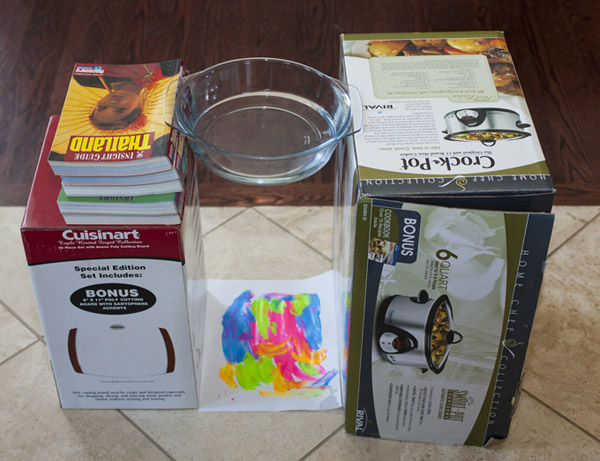
All Photos © Jim Zuckerman
I filled the bowl about halfway with water, and then I simply poured an ounce or two of vegetable oil into the water.
To illuminate the paint, I used a single off-camera flash. I triggered the flash with a Pocket Wizard (www.pocketwizard.com), but less expensive wireless units could also be used. In a pinch you could use any light source.
Periodically, I would add a few more drops of oil, and sometimes I would use my finger to stir the liquids together to create new patterns. I waited for the oil and water to stop moving and then I would search for the intriguing graphic shapes that gave me graphically pleasing abstractions (#1 and #2).
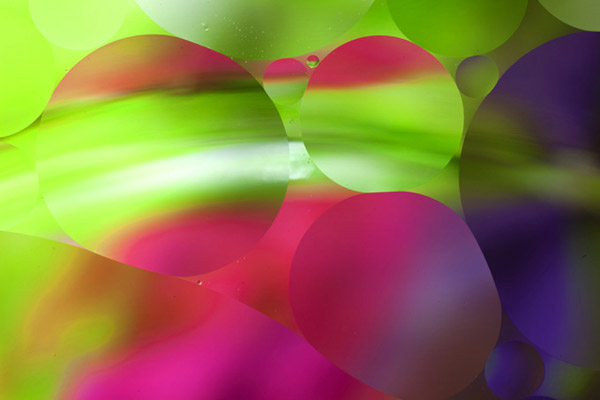
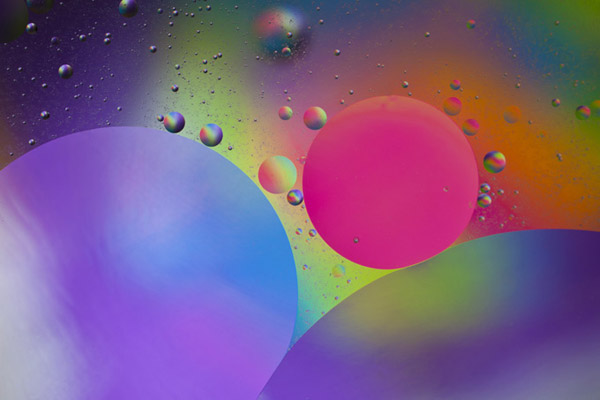
The Exposure
I used a 50mm macro lens plus one extension tube for most of my shots, although when I wanted to frame more of the surface of the water I took the extension tube off and simply used the 50mm macro. I assumed at first that I needed extensive depth of field, so I set the camera to Manual Exposure mode, set the flash to ETTL, and chose f/16 as the lens aperture. My rationale was to make sure I had enough depth of field over the surface of the water. However, what I discovered was that the small lens aperture made the paint on the paper too defined. I wanted the colors to softly blend together in such a way that the lines and the design of the paint on the paper didn’t show at all. A blur of color was the type of background I felt would be ideal.
Therefore, I opened the lens to f/8 and that gave me exactly what I wanted. I hand held the camera to take these images, but I was careful to make sure the back of the camera was as parallel as possible to the surface of the water. This gave me the depth of field I needed for the oil and water. All of the points on the water’s surface were equidistant to the digital sensor, thus depth of field wasn’t an issue, and the colored background was completely out of focus (#3 and #4).
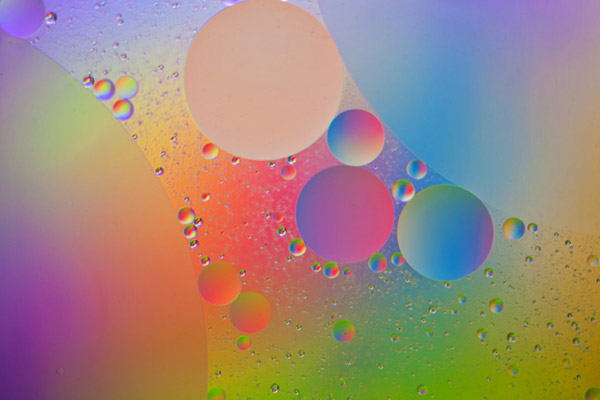

Variation On A Theme
After I took quite a few pictures, I experimented by pointing the flash up through the glass from about 2 ft away and took a shot of the bubbles. I was amazed by the space-like images the circles of oil made (#5). It was like I was in the middle of a crowded solar system with dozens of planets. I made no exposure adjustments—I simply shot straight into the flash. The extreme contrast added to the extraterrestrial-like environment. Likewise, though you have to be extra careful, you could shine a regular light up through the bowl as well.

- Log in or register to post comments


